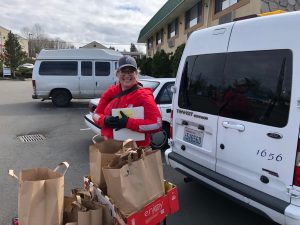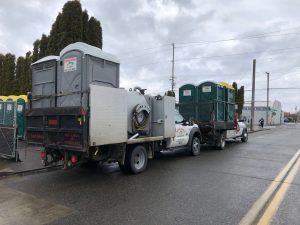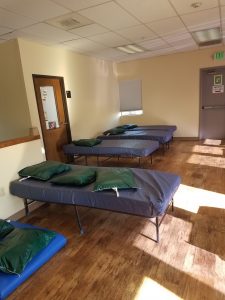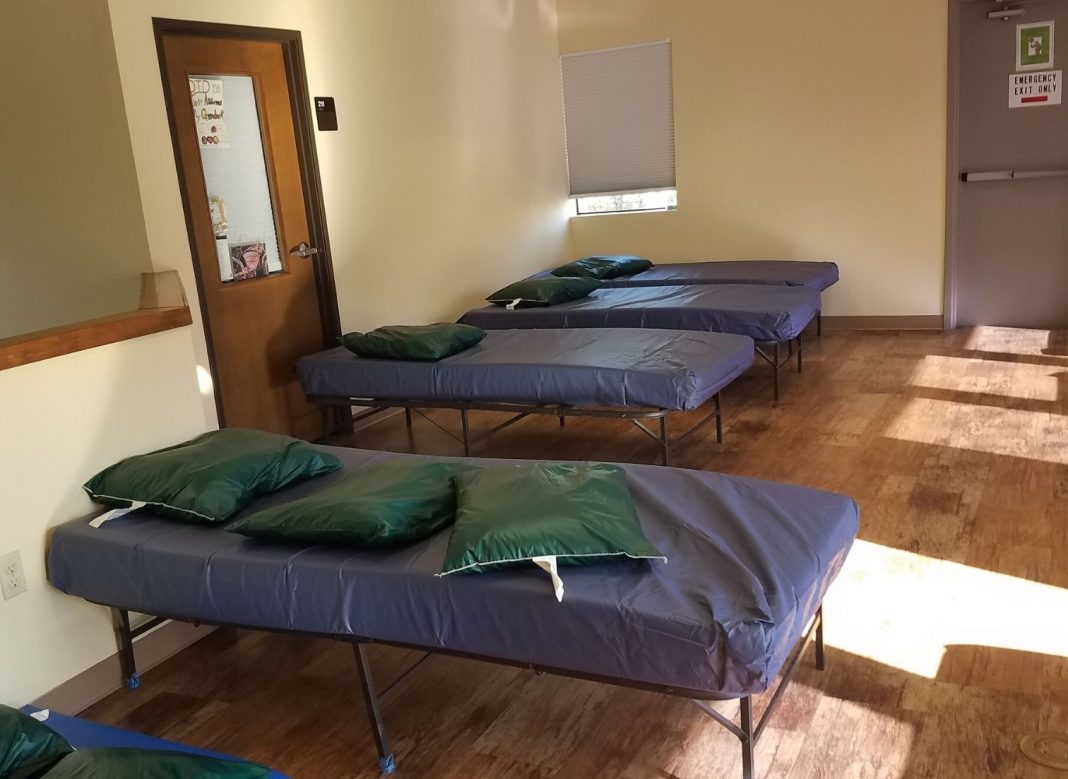The months of quarantine brought on by the COVID-19 pandemic have been grueling for all of us, but can you imagine sheltering in place when your home is an encampment? This was the situation facing more than 1,000 people who make up Thurston County’s unhoused population when the pandemic arrived in our community in late March. Officials at Thurston County orchestrated a robust outreach effort contracting with local nonprofit organizations and government agencies to meet the basic needs of these individuals.

The arrival of the pandemic had several immediate effects on the unhoused community according to Keylee Marineau, Thurston County’s Homeless Prevention and Affordable Housing Coordinator. “When Washington’s physical distancing mandate went into effect, our local shelters went from about 440 available beds to about 330,” Marineau explains. Meals were no longer allowed to be served inside, so a new infrastructure for food distribution had to be established. Additionally, service hubs such as the Providence Community Care Center (CCC) and public restrooms across the county were shut down. The CCC was downtown Olympia’s only one-stop station for hygiene services like laundry, showers and toilets and it remains closed as of the end of July.
The state of Washington saw a crisis coming and allocated nearly $1 million to Thurston County to help relieve the situation the unhoused population now faced. $650,000 went in part toward shelters to operate services 24/7, as well as quickly opening the new shelter facility at 2828 Martin Way. It also funded the preparation and execution of county-wide systems to distribute meals and set up hygiene stations.
“Homelessness was a big deal before the pandemic,” says Keith Stahley, assistant manager at the City of Olympia. Thurston County contracted elements of the relief effort with the City of Olympia, which Stahley has overseen. “The pandemic has exacerbated the problems of daily life associated with our homeless community. It’s heightened the need for hygiene facilities, solid waste disposal and space to help keep everyone safe.”

The City of Olympia used the money allocated from the county to procure and distribute hygiene stations that include portable restrooms and handwashing units. The city hired two representatives from Just Housing Olympia who focused on managing the meal distribution. Tye Gundel and Robert Bruce got right to work establishing a partnership with the Community Kitchen run by Catholic Community Services (CCS) to distribute to-go style meals.
Using vans provided by InterCity Transit, Gundel and Bruce delivered meals to the city-sanctioned mitigation encampment downtown as well as a number of other areas where unhoused individuals park vehicles or camp. Meals prepared at CCS were also distributed at the 2828 Martin Way shelter operated by InterFaith Works, and the shelter at the Salvation Army. They also forged a contract with the Plum Street YMCA to provide access to showers and restrooms while the facility was otherwise closed to the public.
Thurston County also contracted Partners in Prevention Education (PiPE) to help encampment residents shelter in place more comfortably. They used a portion of the grant funds to procure and distribute survival gear, hygiene supplies and additional shelf stable food so encampment residents and those living outside of shelters could stay in one place and continue to feed and care for themselves. PiPE staff were also able to use InterCity Transit community vans to facilitate meal and survival supply delivery.
Although most of these contracts are temporary, set to end in early July but extended through CARES ACT funding through October 31, 2020, there is no doubt they made a tremendous impact on the unhoused community through those initial months of total lock down.

A local hotel has also been contracted for isolation and quarantine to ensure individual rooms are available for any unhoused individual who reports symptoms of COVID-19 while they await their test results. Luckily, at this time, not one unsheltered individual who has been tested for COVID-19 has come back with positive results. “This absolutely does not mean it’s not out there,” Marineau added.
Both Marineau and Stahley emphasize just how much inter-organizational coordination has gone in to supporting our unhoused population during this crisis. Stahley explains how jurisdictions across the county have come together to organize solutions to immediate problems caused by the pandemic, and how it’s also shined light on the fact that homelessness as a general issue needs to be confronted with the same level of cooperation. “These aren’t issues that can be solved by individual jurisdictions. These are community-wide issues that require a community-wide response,” Stahley says. “There has literally been no one on the side lines during this event.”
Visit the Thurston County website to learn more about Thurston County’s COVID-19 response or to get in touch with county representatives.
Sponsored




















































